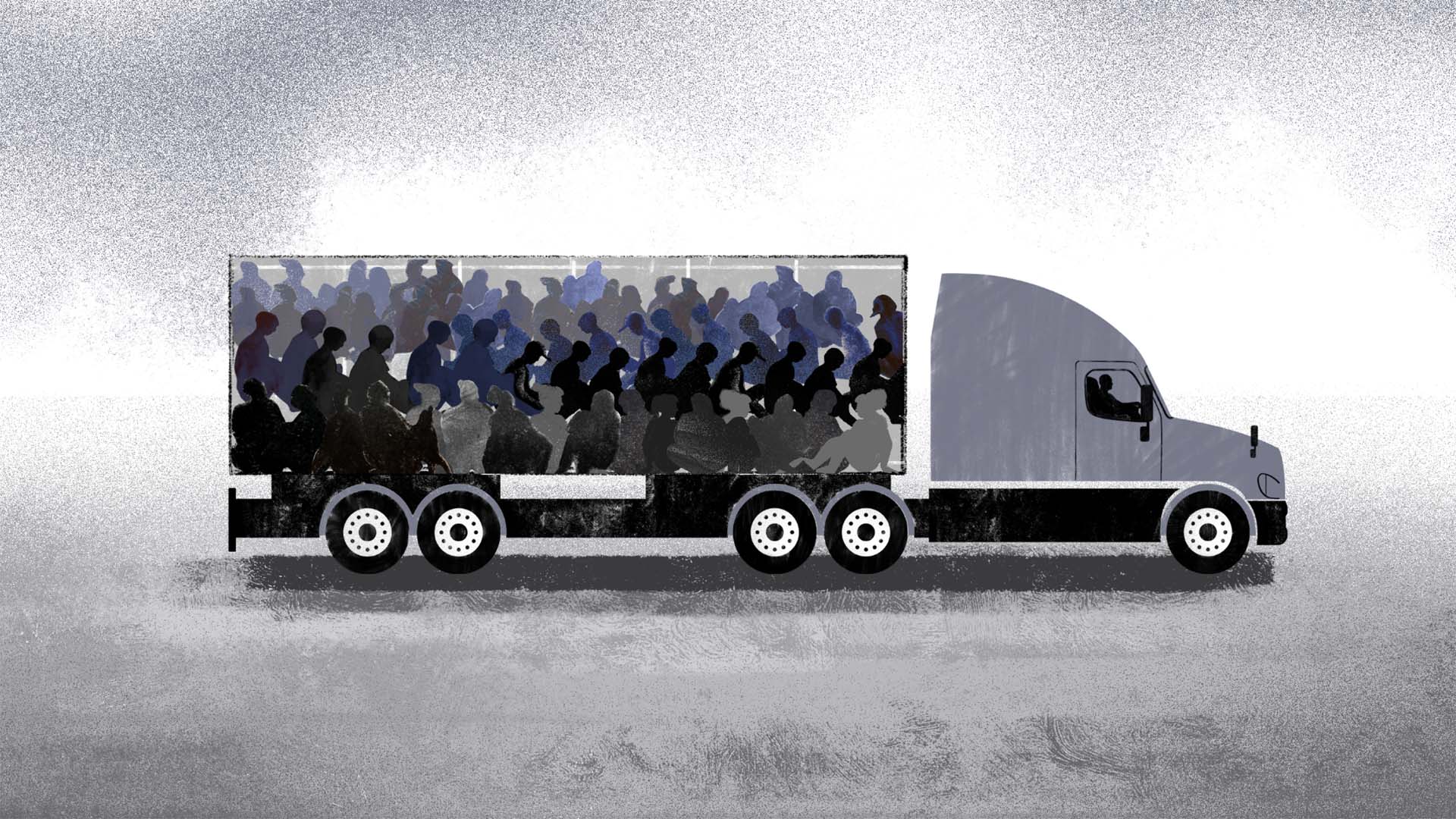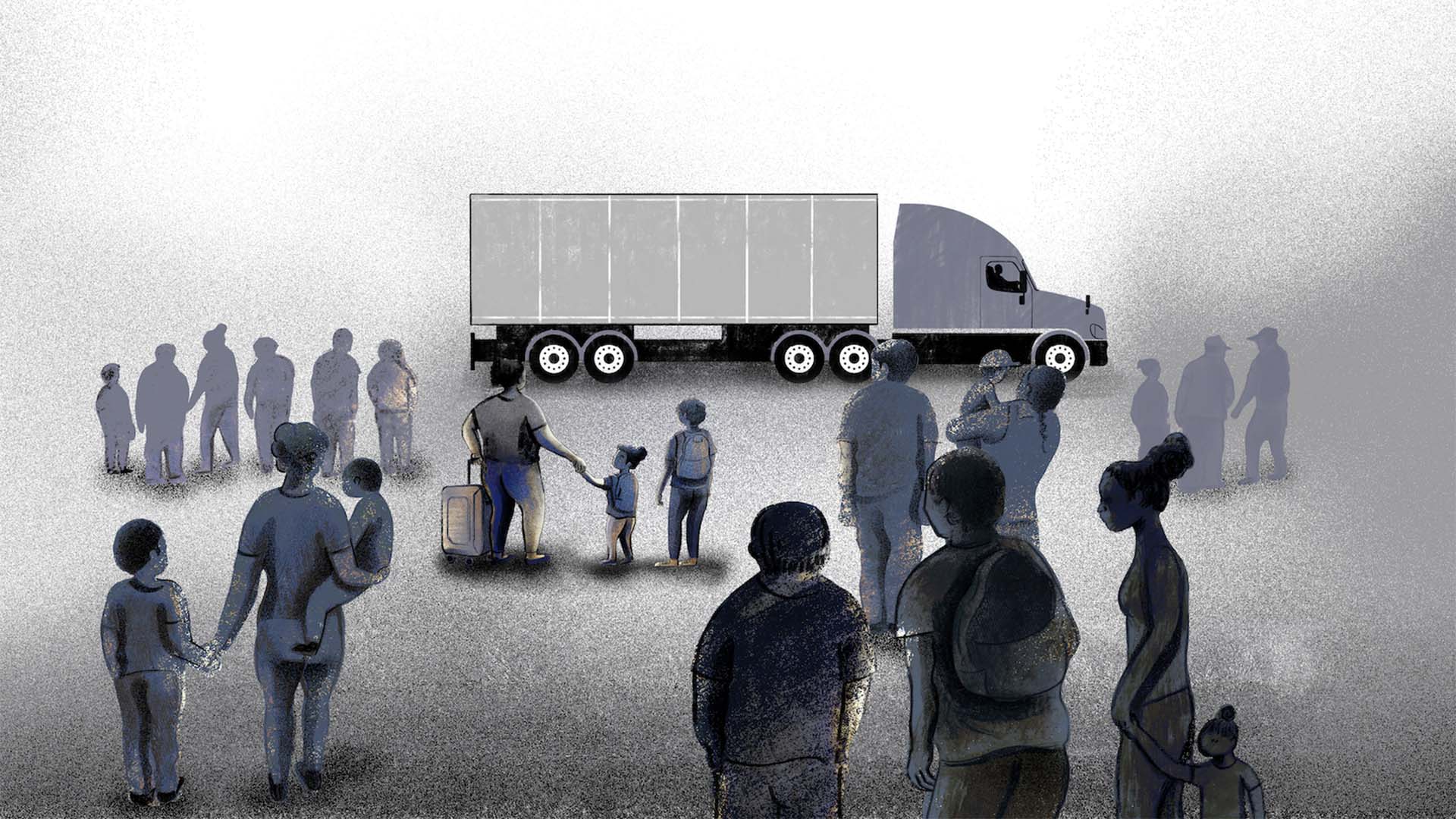DATA JOURNALISM
From Chiapas to Tamaulipas, new database maps thousands of migrants’ dangerous journeys through Mexico in trailer trucks
Data journalists reviewed public records, news coverage and reports by an advocacy group to create a database spanning six years that gives a glimpse into the pattern of deadly smuggling.

Thousands of migrants board trucks in Mexico each year in the hope of reaching the U.S. border and building a new life. Some of those journeys end in tragedy. A cross-border team of investigative journalists in Latin America, Europe and the United States collaborated for seven months on a database that gives a glimpse into dangerous and deadly human smuggling.
Data journalists reviewed public records, news coverage and reports by an advocacy group to create the database documenting nearly 19,000 migrants’ journeys through Mexico. This attempt by reporters to map events across six years and the routes taken by the trucks is unprecedented. Some migrants’ journeys start in the Mexican state of Chiapas on the country’s southern border with Guatemala, and others make it as far as the state of Tamaulipas on the border with Texas. ICIJ helped fact-check the data.
CLICK HERE TO EXPLORE THE DATA
The events listed in the database cover the years 2018 to 2023 and reveal only a fraction of cases, since most of the smuggling remains undetected. The team documented 172 cargo vehicles, most of which were pulling trailers — with no ventilation system — containing anywhere from a few to hundreds of migrants, traveling for days on end in unsafe and overcrowded conditions and sometimes scorching temperatures. The migrants who were found by authorities through routine inspections or because the cargo vehicle was abandoned by the side of the road by the smugglers reported agonizing and inhumane conditions. ICIJ and its media partners documented at least 111 deaths, with hundreds more injured.
This article is part of “Cargo trucks: a trap for migrants,” a reporting collaboration led by Noticias Telemundo and the Latin American Center for Investigative Journalism (CLIP), with the International Consortium of Investigative Journalists and Bellingcat. Pie de Página and its partners Chiapas Paralelo and En un 2×3 Tamaulipas reported in Mexico, Plaza Pública in Guatemala and Contracorriente in Honduras.
Limitations of the data
The data journalists had to contend with a scarcity of known facts. Even though the smuggling phenomenon is well-known in Mexico, governmental authorities have only started tracking these cases more carefully since 2022. During their research, reporters sometimes found limited or contradictory information; in those situations, we chose the conservative approach and included the lowest common number of reported traveling migrants, injuries and deaths.
In the events we reviewed, minors both traveled alone or as part of families but it was not always clear from media reports how many minors traveled in each truck. Some reports mentioned women as a distinct category while others lumped all categories together. As a result, ICIJ only included a separate count for unaccompanied minors. When reports only mentioned the number of unaccompanied minors, we included this figure as the total number of minors, which is certainly an undercount. The data shows that while the majority of migrants in the data are from Central America (Guatemala, Honduras, El Salvador and Nicaragua), some also come from the Caribbean, South Asia and sub-Saharan Africa. However, because nationalities are not always clearly reported, some countries are underrepresented.
In the reporting, the team identified different types of vehicles. Since migrants also travel by bus, in vans and in other types of cargo vehicles, it was important for the fact-checkers to categorize the cases among three categories: smaller box trucks; a type of truck with wooden slats called a “tortón”; and and trailer trucks, such as 18-wheelers. The team had to cross-check events involving a “camión,” as the Mexican Spanish word can refer to either a truck or a bus.
Reporters tried to locate the geographical coordinates of the events as precisely as possible. Sometimes the news item or government report about a truck with migrants described a tollbooth where the truck was inspected or mentioned the name of an area or a milestone along the road. In some cases only a “tramo” (a section of a highway) was outlined. The data journalists successfully confirmed the exact coordinates for 99 events out of 156 in total. Those were mapped by ICIJ’s media partner CLIP, which also detailed the types of events that led to the discovery of the smuggled migrants including inspections, accidents and abandonments. (Blank cells were used to indicate if the type of event was unknown.)
To ensure transparency of our methodology, ICIJ is publishing the database, which reflects the team of journalists’ collaborative work. It can be viewed here.
As more and more migrants from Central America and beyond head for the U.S. through Mexico, it becomes increasingly important to capture their journeys through interviews and data analysis.


